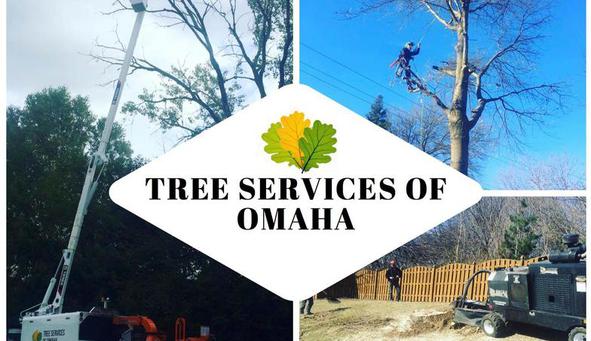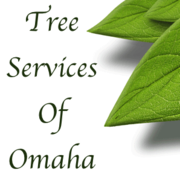Low-Maintenance Trees & Shrubs for Landscaping - Omaha, Nebraska
by David Steg on 10/01/14
The
easiest to care for trees and shrubs are the least demanding once they
reach maturity. While adding any plant species to your landscape or
garden will require some care, several low-maintenance trees and shrubs
only ask for a bit of pruning now and again as well as some raking at
the end of the growing season. However, with all the trees and shrubs
there are to choose from on a visit to the local garden center,
gardeners should have some information about the best species to suit
their lifestyles.
Trees and shrubs go a long way to creating the feeling of home. Visit any new sub-division and notice how the lack of foliage and tall trees detracts from the newness of the structures and demonstrates a barreness that can only be remedied by the installation of trees, shrubs, and gardens. Yet, because these stars of the flora world cannot install themselves these days, it is up to the homeowner to select the varieties that not only suit the look of the setting, but will match the gardener's ability to care for them.
For a low-maintenance landscape there are several trees and shrubs to avoid. Although beautiful and even spectacular, these species simply require too much care to be termed low-maintenance. Gardeners with limited time to care for the landscape should likely avoid these: Norway maple (a constant reseeder), mimosa (messy seedpods), mulberry (messy fruit and disease-prone), willows (messy and pest-prone), Siberian elm (pest-prone), and poplar (invasive roots and weak wood).
Other wonderful examples of low-maintenance trees and shrubs include: heavenly bamboo, Oregon grape, Douglas fir, shrubby cinquefoil, Rugosa rose, lace shrub, Carolina silverbell, Carolina allspice, mountain laurel, Serbian spruce, Japanese yew, downy serviceberry, glossy abelia, European hornbeam, summersweet, Hinoki false cypress, burning bush, Kousa dogwood, border forsythia, rose-of-Sharon, Japanese holly, Japanese snowbell.
Most of these low-maintenance trees and shrubs are ideal selections because they are not greatly prone to pests or disease. Certainly, gardeners will want to check for any damage, but installing these plants will avoid many headaches on the pest and disease front.
Most of the care involved with these trees and shrubs is pruning - a task that is not always well-understood or ideally practiced. Pruning is simply the removal of wood that is diseased, damaged, dead or growing in the wrong direction. Pruning for other reasons usually means that the tree or shrub is probably in the wrong place to begin with. Many shrubs and trees have fallen victim to aggressive pruning; some species tolerate severe pruning well like honeysuckle, mock orange, lilacs and boxwoods.
Some trees and shrubs do well with mulch. Organic mulches are recommended and certainly blend into the landscape best. Fertilizing is not needed on a regular basis, but planting a layer of compost around the trees and shrubs each spring will make for optimum growth. Of course, the best practice for caring for even low-maintenance trees and shrubs is to first investigate each one's needs. Choose plants that suit both your landscape and your lifestyle.
Trees and shrubs go a long way to creating the feeling of home. Visit any new sub-division and notice how the lack of foliage and tall trees detracts from the newness of the structures and demonstrates a barreness that can only be remedied by the installation of trees, shrubs, and gardens. Yet, because these stars of the flora world cannot install themselves these days, it is up to the homeowner to select the varieties that not only suit the look of the setting, but will match the gardener's ability to care for them.
For a low-maintenance landscape there are several trees and shrubs to avoid. Although beautiful and even spectacular, these species simply require too much care to be termed low-maintenance. Gardeners with limited time to care for the landscape should likely avoid these: Norway maple (a constant reseeder), mimosa (messy seedpods), mulberry (messy fruit and disease-prone), willows (messy and pest-prone), Siberian elm (pest-prone), and poplar (invasive roots and weak wood).
Some stellar examples of low-maintenance trees and shrubs include the following.
- The
Amur maple bears dark green leaves that turn a red-orange in the fall.
During drought conditions it will require watering. It makes an
excellent shade tree and, while it is very adaptable to many soil
conditions, it prefers a moist, well-drained soil. Consider it to shade a
porch or patio.
- The
Japanese barberry is a wonderful choice for adding color to the
landscape. It comes in several hues; the 'Red Pillar' is a striking
cultivar. The main task associated with these shrubs is a spring
pruning. They make for a great hedge, but prefer full sunlight and a
soil that is on the dry side.
- The river birch will add great texture to the landscape with its tell-tale peeling bark in a range of colors from gray to ruddy-brown. Plenty of sunlight and a moist acid soil make for one happy tree. It is ideal near a water feature such as a creek or pond. While beautiful throughout the growing season, they add considerable interest to the winter landscape as well.
- With
its pleasingly scented heart-shaped leaves, the Katsura tree is another
year-round delight for the landscape. Its shaggy-style bark makes it
attractive for winter landscapes, but its fall foliage is particularly
beautiful. Full sunlight and a moist, rich soil will allow your tree to
thrive.
- The
Persian parrotia has distinctive peeling bark and produces striking
autumn color. It prefers full sun, but will deal with some shade. A
rich, well-drained soil is required. This spectacular tree is also ideal
for the year-round landscape.
- Japanese kerria is popular for its abundant yellow flowers that add considerable beauty and light to the landscape. Pruning and mulching is necessary, but well worth the effort for this lovely shrub that requires light shade and a well-drained soil.
Other wonderful examples of low-maintenance trees and shrubs include: heavenly bamboo, Oregon grape, Douglas fir, shrubby cinquefoil, Rugosa rose, lace shrub, Carolina silverbell, Carolina allspice, mountain laurel, Serbian spruce, Japanese yew, downy serviceberry, glossy abelia, European hornbeam, summersweet, Hinoki false cypress, burning bush, Kousa dogwood, border forsythia, rose-of-Sharon, Japanese holly, Japanese snowbell.
Most of these low-maintenance trees and shrubs are ideal selections because they are not greatly prone to pests or disease. Certainly, gardeners will want to check for any damage, but installing these plants will avoid many headaches on the pest and disease front.
Most of the care involved with these trees and shrubs is pruning - a task that is not always well-understood or ideally practiced. Pruning is simply the removal of wood that is diseased, damaged, dead or growing in the wrong direction. Pruning for other reasons usually means that the tree or shrub is probably in the wrong place to begin with. Many shrubs and trees have fallen victim to aggressive pruning; some species tolerate severe pruning well like honeysuckle, mock orange, lilacs and boxwoods.
Some trees and shrubs do well with mulch. Organic mulches are recommended and certainly blend into the landscape best. Fertilizing is not needed on a regular basis, but planting a layer of compost around the trees and shrubs each spring will make for optimum growth. Of course, the best practice for caring for even low-maintenance trees and shrubs is to first investigate each one's needs. Choose plants that suit both your landscape and your lifestyle.
Comments (0)



